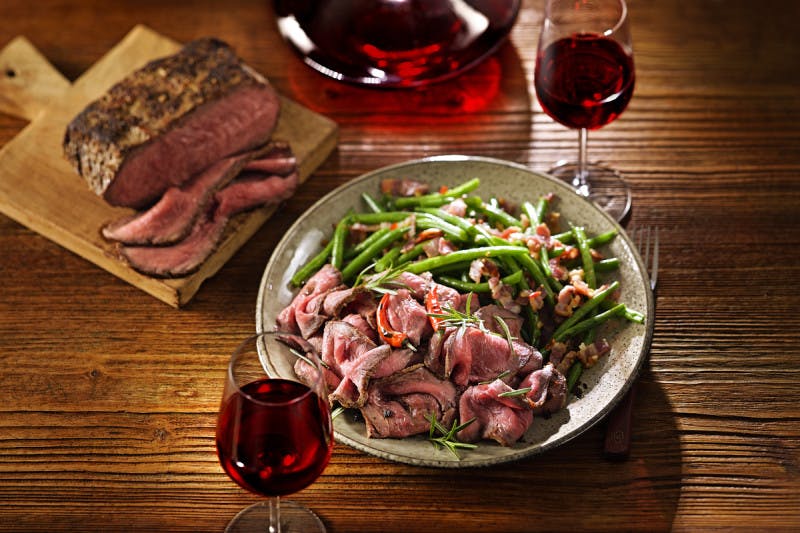Wine and food
The combination of food with wine covers a very wide spectrum in which there is a huge scope for trial and error as well as discussion and also includes a great many different approaches.
There are die-hard conservatives who take care to observe the strict tried-and-trusted traditional rules, by which a wine must be paired with foods that have been prepared in a certain manner. Then come the modernists, who, not knowing the previously tried-and-tested culinary delights, preach food and wine matching combinations as their taste buds command, as long as their sense of fantasy and taste is being sated.
However, a basic set of rules for the study of harmony in the culinary arts does exist. Let us try and revise a few of them, some of which you are perhaps familiar with. You will then be better able to make your choice of wine according to your personal taste:
Acidic + acidic adds up. Acidic food with acidic wine will come across as aggresive, as acids taste metallic.
Acidity + fatty foods. Acidic wines dissolve the greasiness and the result is quite pleasing.
Acidity + alcohol + spices. Acidity with alcohol increase the pungency of the spiciness.
Acidity + sweetness. Stand up well to each other and increase the vigour of the dish.
Tannins + salt. Mutual enemies, cannot stand one another and cause a confusion of tastes.
Salt + sweetness. Do not entirely come to terms, but the sensation softens.
Tannins and sweetness. Tannic food and sweet wine complement one another nicely.
Bitterness + acidity. Do not go together as they increase the sensation of bitterness.
Tannins + fatty foods. Suitable combination. They neutralise each other.
Sweetness + sweetness. Harmonious combination. The impression of sweetness does not increase, in fact it is lowered if the wine is sweeter than the food.
Bitterness + tannins. Tannic wine increases the bitterness of the dish. The only exception is a combination of walnuts with a youthful red wine.
Tannins + smokey tones. The bitterly tannic taste of young red wines, which would be unpleasant when combined with other dishes, will be eliminated in the company of smoked or grilled foods.
Smokiness + acidity. Only wines that have well-rounded acidity or oak ageing in barriques with high toasting.
The combination of food with wine covers a very wide spectrum in which there is a huge scope for trial and error as well as discussion and also includes a great many different approaches.

Examples of mutual accord between food and wine
Light wines - light food. Food which is not heavily spiced and contains little fat (fish, lean poultry, other white meat) is best combined with dry kabinet-type wines - Sylvaner, Müller-Thurgau, Riesling, Blauer Portugieser.
Heavy foods - full wines. The fattier the foods (streaky pork, bacon, oily fish, dishes with mayonnaise) the more they need a higher level of alcohol and extract in the wine – e.g. late-harvest wines or quality wines with a higher alcohol content. Chardonnay, Pinot Gris, Pinot Blanc, Neuburger, Kerner, Pinot Noir, Dornfelder.
Spicy foods - full and expressive wines. Dry and intense on the palate, alternatively mature reds from Blaufränkisch/Lemberger, Pinot Noir, Saint Laurent, Merlot, Cabernet Sauvignon grapes would marry well with roast beef, steaks, lamb, game.
Sweet foods, sweet wines. Sweet dishes are far better combined with mature sweet wines that are sweeter than themselves, otherwise the wines would taste rather tart.
Wine Consumption
On average every Czech citizen consumes some 20.1 litres of wine per year. This means that over the past 20 years there has been an increase of around one third, while over the past 10 years the increase is approximately one quarter. The European average totals around 36 litres per person per year.
Author: Professor Vilém Kraus, CSc.